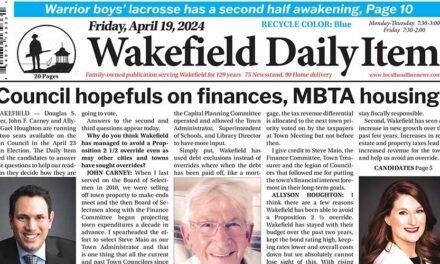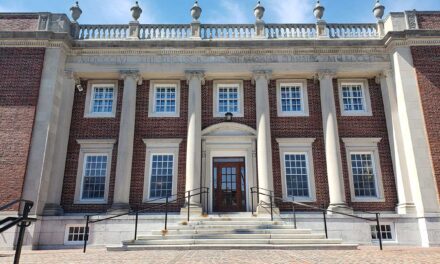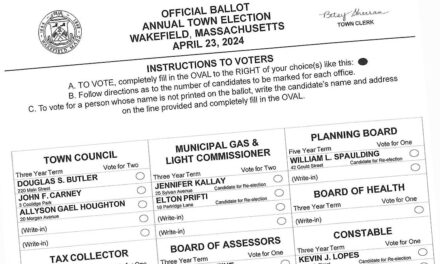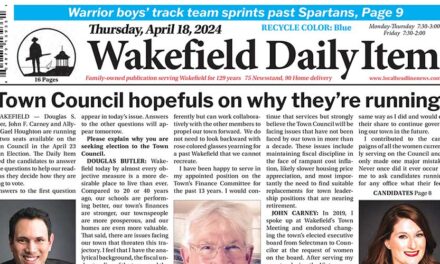Published in the January 10, 2019 edition.
By MARK SARDELLA
Once upon a time, there was a perfect little town that had the perfect number of people living in the perfect number of homes. That perfect little town had a perfect little downtown with the perfect number of perfect little shops, selling perfectly adorable items to the perfect number of customers.
Then, the town fathers let the big, bad, greedy developers come in. They built giant apartment and condominium buildings everywhere and turned the perfect little town into a big, ugly, city.
The End.
I hope you enjoyed today’s fairy tale. Like all fairy tales, it’s simple, easy to understand and has nothing to do with reality.
And like most fairy tales, it’s also timeless. I’ve been hearing one version or another of this fable for at least 50 years. Ask someone older that me (if you can find him) and he’ll tell you about horror stories going back even further, warning of the Big Bad Wolf of Malden at our door.
The myth that Wakefield is losing its “small town charm” is an enduring one, promulgated by people who apparently prefer run-down factory buildings and vacant lots to shiny new housing for people to live in.
Based what you’ve been hearing about this decades-long building spree, you might conclude that Wakefield has experienced a population explosion.
You would be wrong.
Wakefield’s population has actually shrunk in the last 50 years. In 1968, the town’s population was 25,571. In 2018, it’s 24,426.
Sadly, the days of big families with four, six or more children are gone forever. It’s not just Wakefield. Our alternately selfish and self-loathing society has decided that humans don’t deserve to reproduce and we shouldn’t inflict Mother Earth with more of our kind.
Today’s much smaller family units mean that towns like Wakefield need more families in order to maintain something close to a stable population. Unless you want those families pitching tents and living in communes on the Common, they’re going to need housing.
In recent years critics have lectured that the town needs to have a plan – one that incorporates the principles of “smart growth.” Smart growth is a theory that concentrates development in or near compact, walkable urban centers. It also advocates building near public transit lines to encourage car-free, walkable, bicycle-friendly land use, including mixed-use development.
Let’s look at where the new housing developments have been appearing lately.
There’s Wakefield Station at 175 North Ave. It’s a stone’s throw from the commuter rail station and a block from the downtown. It also has a high-end restaurant on the ground floor. But I guess some people preferred the decrepit, old factory building that was there before.
There’s Brightview on Crescent Street. It replaced several neglected rental properties and a former factory building with new housing and assisted living for senior citizens that’s close to the downtown, the Post Office, restaurants and stores, not to mention the Common and the Lake.
On North Avenue near the Reading line we have the new 24-unit garden-style apartment building, “600 North.” It’s on the MBTA bus line and equidistant from the Wakefield and Reading train stations. It’s across the street from Lakeside Office Park and next to a car dealership.
Or how about Wakefield Landing, the one that’s going up on Main Street across from the Galvin Middle School in the downtown area. There’s a used car dealership on one side and the old Verizon building on the other side. The developer has agreed to improve the long-neglected town-owned strip of land in front of the building. There’s a bus stop right in front of it and it’s a block from the train station.
On Main Street in the Junction, there’s a new eight-unit condo project going up between Dunkin’ Donuts and Lisa’s Pizza. It’s on the MBTA bus line and a short walk to the commuter rail. Maybe some people preferred the falling-down building with a convenience store that was there before.
Then we have the new building planned for 69 Foundry Street. This is an industrial district. The new project will replace the run-down former Wakefield Bearing factory. It will be literally across the street from the train tracks and a one-minute walk to the commuter rail station. The developer will be cleaning up hazardous waste on the site.
We could go on, but what do all of these projects have in common? Thanks in part to a zoning change that the town proposed and Town Meeting approved several years ago, these projects are all concentrated in business and/or industrial districts. They are on or very near public transit lines. Most are a short walk to the downtown.
That sounds a lot like “smart growth” to me.
Whenever there’s an override or a debt-exclusion proposed for a new school, one of the selling points is always the idea that good schools attract families to the town. But if you want to have an attractive town that people want to move to, you need to have places for them to live in.
Another common refrain these days is, “I moved here to get away from the city. Now the city is coming here.” The elitist implication is that cities bring undesirable elements. This “I got mine, now you stay out,” attitude is rather unseemly for a community that prides itself of being “welcoming.”
How “welcome” do you think the residents of Wakefield Station or 600 North feel when they see endless social media posts complaining about the very existence of their homes?
“Wakefield is turning into a city!” wail the same people who, with no sense of irony, lecture us that Wakefield should be more like Melrose.
The complaints about growth and development are as old as Wakefield itself. Don’t expect them to stop any time soon.
Welcome to Wakefield.




